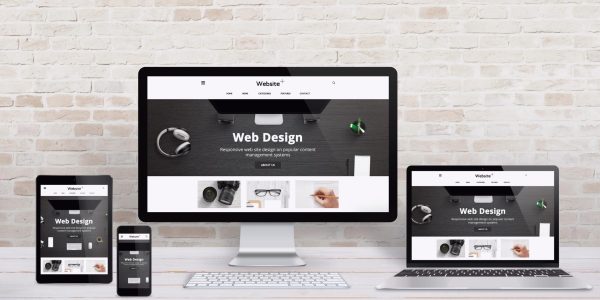Launching an effective ad campaign is more than just creating eye-catching ads and targeting the right audience. The success of your ad campaigns heavily relies on what happens after someone clicks on your ad. This is where a high-converting landing page comes into play. Well-optimized ad campaign landing pages can be the deciding factor in whether your promotion translates into actual sales or falls short of expectations. But what exactly makes a landing page effective? Let’s explore the ten essential elements that every landing page should have to maximize conversions and enhance your marketing efforts.
1. Clear and Compelling Headline
The headline is arguably the most critical part of your landing page. It’s the first thing visitors see, setting the tone for their entire experience. A clear and compelling headline should immediately communicate the value of your promotion. It needs to be concise yet powerful, capturing attention and encouraging the visitor to stay on the page. For instance, instead of a vague headline like “Best Deals in Town,” a more specific and engaging headline such as “Get 50% Off Your First Order Today Only!” clearly states the benefit and creates a sense of urgency, making it more likely to convert.
2. Strong Subheadline
While the headline grabs attention, the subheadline should reinforce the message and provide additional context. It supports the headline by elaborating on the key benefits or offering more details about the promotion. A strong subheadline should be brief and to the point yet informative enough to keep the visitor interested. For example, a subheadline like “Exclusive Offer for New Customers – Don’t Miss Out!” adds a layer of exclusivity and urgency that can help boost conversions.
3. Engaging Visuals
Visual elements are crucial for making your landing page more engaging and effective. High-quality images and videos can help convey your message quickly and clearly. Visuals should be directly related to the promotion or product being advertised. For example, if you’re promoting a new fitness app, showing images or videos of people actively using the app can create a more engaging experience. Videos are particularly powerful because they can demonstrate the product’s benefits in action, helping to persuade visitors to take the next step.

4. Focused and Relevant Content
Content is the backbone of your landing page, guiding the visitor through your promotional offer and persuading them to convert. The content should be concise and focused on a single goal or call to action (CTA). Avoid overwhelming visitors with too much information or unrelated details. Instead, use clear, benefit-oriented language that speaks directly to the visitor’s needs. Bullet points, short paragraphs, and bold text can help make your content more scannable and digestible. Remember, the goal is to provide just enough information to encourage visitors to take action, whether it’s signing up for a newsletter, downloading a free guide, or making a purchase.
5. Strong Call to Action (CTA)
A high-converting landing page always features a strong call to action. Your CTA should be clear, direct, and compelling, guiding visitors toward the desired action. Use action-oriented language such as “Get Your Free Trial Now,” “Sign Up Today,” or “Download Your E-Book.” The CTA button should stand out on the page, using contrasting colors and large fonts to draw attention. Placement is also key – ensure the CTA is easily accessible, ideally above the fold or repeated in several strategic locations throughout the page, especially on longer pages.
6. Social Proof and Trust Signals
Building trust is crucial for converting visitors into customers, and social proof is an effective way to do this. Displaying testimonials, customer reviews, case studies, or logos of well-known brands you’ve worked with can help establish credibility and build trust with your audience. Trust signals such as security badges, money-back guarantees, or satisfaction guarantees can also reassure visitors that they are making a safe and smart decision by converting. Use genuine testimonials and provide enough context to make them believable and relatable.
7. Mobile Optimization
With a significant portion of web traffic coming from mobile devices, it’s essential to ensure your landing page is fully optimized for mobile users. A mobile-optimized landing page provides a seamless experience for visitors, regardless of the device they’re using. This means the page should load quickly, be easy to navigate, and display correctly on smaller screens. A mobile-friendly design can significantly improve user experience and increase conversion rates, making it a vital component of any high-converting landing page.
8. Minimal Distractions
The primary goal of a landing page is to convert visitors, so it’s essential to minimize distractions that could divert attention away from your CTA. Remove any unnecessary navigation menus, links, or elements that don’t contribute to the conversion goal. A clean and simple design helps keep the visitor’s focus on the key message and the desired action. Every element on the page should serve a purpose and contribute to guiding the visitor toward conversion.
9. Effective Use of White Space
White space, also known as negative space, is the area of a page left unmarked. It’s a powerful design tool that can enhance the effectiveness of your landing page. Proper use of white space helps to break up content, making it easier to read and digest. It also allows key elements, such as headlines, images, and CTAs, to stand out more clearly. A cluttered page can overwhelm visitors and reduce conversions, but a balanced design with ample white space can create a more pleasant and focused user experience.
10. A/B Testing and Analytics
No matter how well-designed your landing page is, there’s always room for improvement. A/B testing is a vital part of optimizing your landing page for better conversion rates. By testing different elements – such as headlines, images, CTAs, and even the color of the CTA button – you can determine which version performs better and make data-driven decisions to enhance your page. Additionally, use analytics tools to track visitor behavior, such as click-through rates and bounce rates, to identify potential areas for improvement. Regular testing and analysis ensure your landing page continues to evolve and improve over time.
A high-converting landing page is essential for maximizing the effectiveness of your ad campaigns and marketing efforts. By focusing on these ten essential elements, you can create a landing page that not only attracts visitors but also converts them into customers.
Remember, the key to success is continuous testing and optimization to ensure your landing page meets the needs of your audience and achieves your marketing goals. With the right approach, your landing page can become a powerful tool for driving conversions and growing your business.





